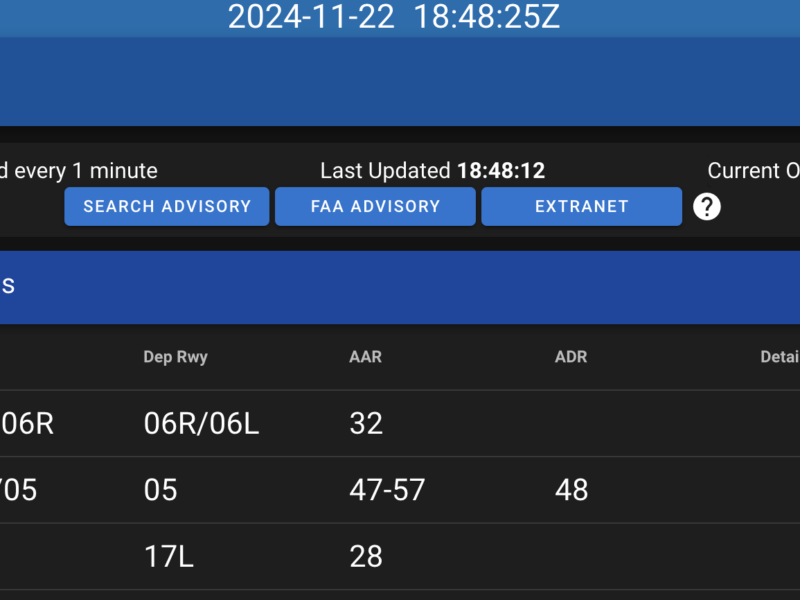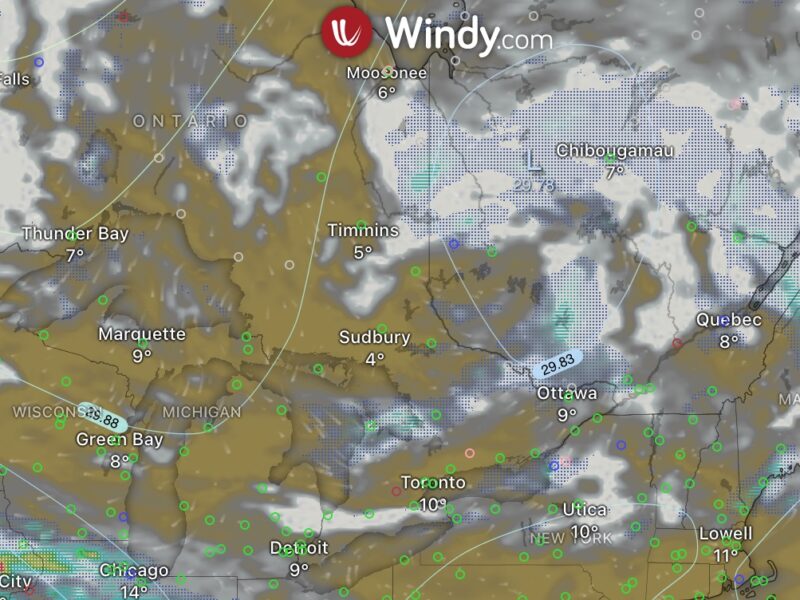Today was a textbook day for illusions! I was afraid that it would be weeks before I could experience them first hand. I was able to book this flight a little last minute on Friday night.
I was going to experience two illusions today. These illusions are created by drift. It’s pretty simple really:
Ground speed. If you have a strong headwind or tail wind, it “looks” like you are going faster (tailwind) or slower (headwind) than you actually are. If you look solely at your airspeed, this is true. However, your ground speed does increase or decrease respectively. To illustrate this, we put the aircraft into slow flight, the goal was trying to make our ground speed 0KT. With the plane in slow flight, we were hovering around 45KIAS… however our ground path was almost 0! I felt like a helicopter just hovering in one spot. Pretty cool.
The moral of the story, don’t rely on how fast the ground is moving to determine your actual airspeed.
Turning. Because of the wind, you will need to start your turns later (headwind) or earlier (tailwind). When turning in a headwind the airplane will feel like its slipping into the turn. It’s important to use the Turn Coordinator and not the ground as your tool to determine co-ordination. Make sure you don’t put too much rudder in (like I did the first time). Start your turn later than you normally would. Turning in a tailwind the airplane will feel like it’s skidding into the turn. Make sure that you start the turn earlier than you normally would.

I also practiced a few spirals and spins too. I wasn’t too comfortable with my ability to recover from them yet. After todays practice, I’m much more comfortable. I need to speak out the steps that I’m doing so that my instructor (and eventual flight examiner) will know exactly what I’m doing.
Today was the most comfortable that I’ve felt in the airplane. I was able to hold altitude pretty well heading up to the practice area and even in my turns. Radio work is pretty much down pat. The only thing I’m not doing yet are calling base while in the circuit and annoucing our position/intentions in the practice area (which is no big deal really).
Landing wasn’t as tough as I thought… even with the gusty conditions. When landing with a gust factor follow this simple rule:
Take the gust factor, half it, then apply that value (in KIAS) to your approach speed.
So today, the gust factor was 7KT (26KT-19KT), half that (we rounded up to 4) and made our approach speed 69KIAS (instead of the normal 65KIAS).
Make sure that you have your crosswind correction in when you’re on the runway, whether taking off or landing.
I’m noticing that my take offs are getting much more smooth. I need to call out whats happening while we’re taking off though:
– Full Throttle (check to make sure that RPMS are up, ~ 2600 RPMs)
– Parameters in the green (oil pressure and temperature are in the green range)
– Speed is alive (the airspeed indicator is showing an increase in an airspeed)
If any one of these checks fail, abort the take-off. I noticed that today my FI was not calling these out. I was too worried about my crosswind corrections during the take-off that I didn’t start checking those items.
Navigation is all on my own now too. I’m getting better each flight. I love it how my FI goes “ok, take us home” and I can do it. I know what altitudes I need to be at when, when to make my radio calls to tower, and I can spot my landmarks. However, take me to the east practice area, and I’m sure I’ll be lost.
So whats next? My Pilot Training License. You need this license in order to go solo. So my FI suggested that I write the necessary exams soon. I’m going to write the Radiotelephone Operators License exam on Monday. It’s pretty straightforward and not that difficult. As for the PSTAR test .. I am going to need to study for that some more before I can take it. Right now, I’m aiming for March 20th.
(Click the map to see a bigger image. This particular outing shows how inaccurate the GPSs altitude feature is. It indicated under 500 feet for most of the take-off.. which is impossible since the elevation of the airport is 650′)




Interesting posting. It’s worth noting, however, that the wind has nothing does not affect whether you slip at the beginning of a turn. The plane flies in the wind and knows nothing about whether it’s a headwind, tailwind, or crosswind relative to the ground. It will behave exactly the same turning in a headwind, tailwind, or no wind at all.
Yes, you are correct. I wasn’t clear in my original post. I have since amended it.
The plane is indeed not slipping or skidding. However the winds give it the illusion that it is.
Take a look at the Flight Instructor Guide for this lesson.
The PSTAR test is really easy – I think I did mine in about 15 minutes with only a single (silly) mistake. Don’t sweat it – the radio licence is the one worth studying for, believe it or not, as you do have to write up exact radio calls for Mayday / Pan situations.